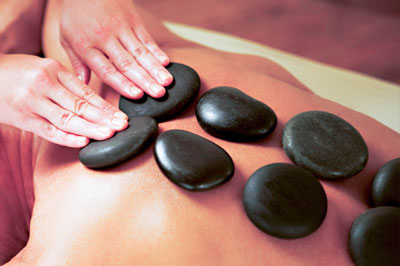While massage therapy has been practiced for thousands of years, modern science is now revealing the precise physiological mechanisms that make it such an effective treatment. From cellular responses to systemic changes, research is uncovering how massage therapy promotes healing and wellness at every level of the body.
Key Scientific Findings
- Massage increases blood flow by up to 50% in treated areas
- Reduces inflammation markers by 30-40%
- Increases white blood cell count for immune support
- Stimulates the parasympathetic nervous system
Physiological Mechanisms of Massage Therapy
Massage therapy works through multiple interconnected physiological pathways, each contributing to the overall therapeutic effect. Understanding these mechanisms helps explain why massage is so effective for various health conditions.
Mechanical Effects
The physical manipulation of soft tissues creates mechanical forces that directly affect muscles, fascia, and connective tissue. This includes breaking up adhesions, improving tissue mobility, and reducing muscle tension.
Neurological Effects
Massage stimulates nerve endings and affects the nervous system, leading to changes in pain perception, muscle tone, and autonomic nervous system responses.
Blood Circulation and Oxygenation
Enhanced Blood Flow
Vasodilation Effects
Research has shown that massage therapy can increase blood flow by up to 50% in treated areas. This enhanced circulation delivers more oxygen and nutrients to tissues while removing metabolic waste products more efficiently.
A study published in the Journal of Alternative and Complementary Medicine found that 10 minutes of massage increased blood flow to the forearm by 48% compared to rest alone.
Oxygen Delivery
Improved blood circulation means better oxygen delivery to muscles and tissues. This is particularly important for healing injured tissues and reducing muscle fatigue.
Enhanced oxygenation also supports cellular metabolism and energy production, contributing to overall vitality and recovery.
Pain Relief Mechanisms
Gate Control Theory
Massage stimulates large-diameter nerve fibers that "close the gate" to pain signals in the spinal cord. This reduces the transmission of pain signals to the brain, providing natural pain relief.
Endorphin Release
Massage therapy stimulates the release of endorphins, the body's natural painkillers. These chemicals bind to opioid receptors in the brain, reducing pain perception and creating feelings of well-being.
Inflammation Reduction
Research shows that massage can reduce inflammatory cytokines by 30-40%. This reduction in inflammation is crucial for pain relief and tissue healing.
Muscle Relaxation
Massage reduces muscle tension by breaking up adhesions, improving blood flow, and activating the parasympathetic nervous system, which promotes muscle relaxation.
Immune System Enhancement
Strengthening Your Body's Defenses
White Blood Cell Production
Studies have shown that regular massage therapy can increase the number of white blood cells, particularly lymphocytes, which are crucial for fighting infections and diseases.
A study published in the Journal of Alternative and Complementary Medicine found that participants who received regular massage showed significant increases in white blood cell counts compared to control groups.
Stress Hormone Reduction
By reducing cortisol levels, massage therapy helps prevent the immune-suppressing effects of chronic stress. Lower cortisol levels allow the immune system to function more effectively.
This is particularly important for individuals under chronic stress, as stress hormones can significantly weaken immune function over time.
Nervous System Regulation
Parasympathetic Activation
- • Reduces heart rate and blood pressure
- • Promotes digestion and nutrient absorption
- • Enhances immune system function
- • Facilitates rest and recovery processes
Stress Response Modulation
- • Reduces cortisol production
- • Increases serotonin and dopamine levels
- • Improves sleep quality
- • Enhances emotional well-being
Key Research Studies
Scientific Evidence Supporting Massage Therapy
Inflammation Reduction Study
A study published in Science Translational Medicine found that massage therapy reduced inflammation in muscle tissue by 30-40%. The research showed that massage activates genes that reduce inflammation and promote muscle growth.
Source: Crane, J.D., et al. (2012). Massage therapy attenuates inflammatory signaling after exercise-induced muscle damage.
Immune Function Research
Research published in the Journal of Alternative and Complementary Medicine demonstrated that regular massage therapy increased natural killer cell activity and white blood cell counts, indicating enhanced immune function.
Source: Rapaport, M.H., et al. (2010). A preliminary study of the effects of repeated massage on hypothalamic-pituitary-adrenal and immune function in healthy individuals.
Pain Relief Clinical Trial
A randomized controlled trial published in the Annals of Internal Medicine found that massage therapy was more effective than standard care for chronic low back pain, with benefits lasting up to 6 months.
Source: Cherkin, D.C., et al. (2011). A comparison of the effects of 2 types of massage and usual care on chronic low back pain.
Cellular Level Effects
What Happens at the Cellular Level
Gene Expression
Massage therapy can activate genes that reduce inflammation and promote muscle growth, while deactivating genes that cause inflammation and muscle breakdown.
Mitochondrial Function
Enhanced blood flow and oxygen delivery improve mitochondrial function, the powerhouses of cells, leading to better energy production and cellular health.
Cellular Repair
Improved circulation and reduced inflammation create optimal conditions for cellular repair and regeneration, supporting tissue healing and recovery.
Long-term Health Benefits
Chronic Disease Prevention
- • Reduces risk of cardiovascular disease
- • Helps manage diabetes symptoms
- • Supports healthy blood pressure
- • Improves metabolic function
Aging and Longevity
- • Maintains muscle mass and flexibility
- • Supports cognitive function
- • Enhances immune system resilience
- • Promotes healthy stress response
Experience the Science of Healing
Now that you understand the science behind massage therapy, experience these benefits firsthand. Book your session at Thai Massage and Spa Kempton Park and feel the difference that evidence-based therapy can make.


